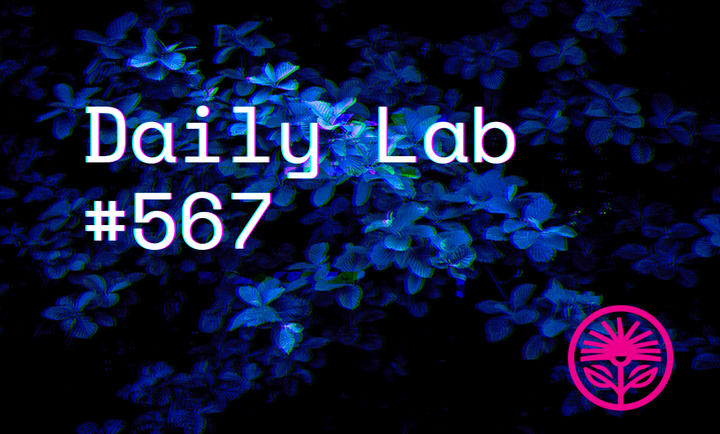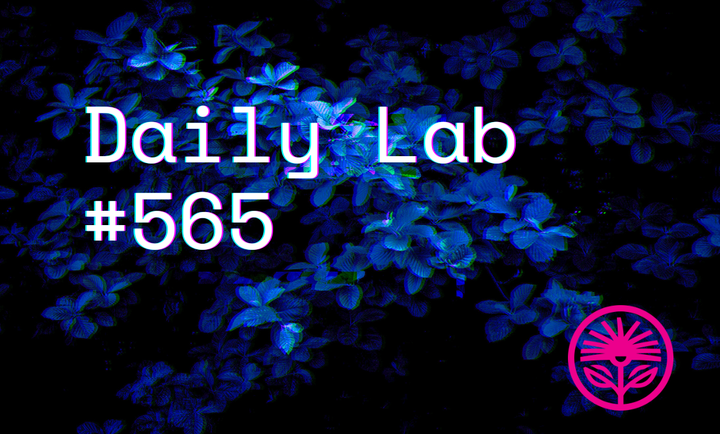Your content is coherence — Kelford Labs Weekly
Connecting to the real world.

“Consistency is not a replacement for insight. ... Logic does not consider whether our beliefs are true. A logical person can be wrong in everything she or he believes and still be consistent.”
— Gary Klein, Sources of Power
You’ve probably seen clips of AI video generators creating uncannily perfect depictions of impossible things:

These look so weird because they’re internally consistent but externally incoherent. Frame to frame, token to token, the video makes sense.
One frame passes into the next smoothly, naturally, consistently. The scene looks like fun but, alas, it is an impossibility.
Because if you compare what it depicts to what actually is, in the real world, you notice that it’s incoherent.
Notice, for instance, that the dogs in the backseat just... appear there, out of nowhere, in a way that things in the real world don’t.
It makes you think about, if this tool was used to predict or understand something in the real world, whether it could be trusted. It makes you suspect that its internal world model is quite flawed.
Even if it seems, moment to moment, logical and consistent.
This is also the trouble experts and consultants can run into when they create marketing content:
It can all seem consistent and logical when they’re writing it out or speaking it to a camera, but when you try to map it onto the real world, you can’t.
That’s not to say that the expert is wrong, only that their content doesn’t connect well enough to the external world.
The prospect or audience is suspicious of it, or ignores it completely, because it doesn’t obviously connect to their own experience.
“So we need to hurry. ... Because our understanding—our grasp of the world—may be gone before we get there.”
— Marcus Aurelius, Meditations
One common example is letting marketing content become stale and out of date.
If all our content is from months or years ago, that sends a signal. It tells our audience that our understanding or grasp of the world may be gone.
Or it might be that our content seems to ignore the reality that our prospects operate within. Content that makes everything sound too easy, or even too complicated, might reveal a disconnect between our world model and our ideal clients’.
If it seems like what we’re suggesting or proposing is out of step with what our audience knows to be true about their own situation, they’re more likely to dismiss it as being out of touch.
They’re more likely to think that our world model, the picture we hold in our head of how everything works and interacts, is inaccurate or incomplete.
And they’ll wonder why they should trust someone whose ideas don’t accurately connect with the world as they know it to be.
“Every piece of music and each scientific article is an attempt to transfer something to the audience, not merely to ‘express’ or ‘publish’ it. Writing, in particular, is always a form of teaching—an attempt to give the readers what they did not have before.”
— Scott L. Montgomery, The Chicago Guide to Communicating Science
I think this requires understanding that the point of content isn’t to simply produce it, it’s to connect our ideas, opinions, and expertise to the challenges and opportunities of our ideal clients.
That means taking into account what they already know and don’t know. What they need to know most. And what they’re mostly likely to be able to grasp in an individual piece of content.
I like how Steven Johnson put it in Where Good Ideas Come From: “Hunches that don’t connect are doomed to stay hunches.”
We’ve got to reach out and connect our ideas, our hunches and our assumptions, to the real world around us. That’s how they turn into more than ideas. They become inventions:
Things that work because they causally connect to the real world around us. The very same world our ideal prospects operate in.
“The ability to trust someone else is a necessary, though not a sufficient, condition for being trustworthy.”
— David Maister, The Trusted Advisor
What this looks like in practice is doing more than simply publishing our ideas and our opinions.
It’s about more than trying to be an expert or a “thought leader.” More than just going on LinkedIn and saying what we believe or what we think about a topic.
More than just publishing a blog or even a newsletter with a bunch of opinions or even best practices.
We’ve got to show that what we believe and say we know actually adheres to the way the world really works.
In an incredible bit of meta content marketing, I got to experience exactly this just the other day, talking to a new client about their marketing position. We were digging into what makes their business different from their category as a whole.
She talked about the way they connect with their clients. The way they care about their clients’ mission. And she talked about wanting to overdeliver for them.
“But more than anything,” she said, “I want to be known for getting real results.”
So I said, “Coincidentally, I’m actually working on a new model for content marketing that’s all about mapping the connections between your ideas so you can demonstrate your expertise. Then, you show how your ideas coherently connect to your clients’ world so you can demonstrate your real results. And then you talk to prospects in a way that proves that your values overlap.”
She said, immediately and enthusiastically, “That’s exactly what I want to do.”
What a coincidence, right?
That a new client would almost predict what I’m writing about right now, and would already want to experience what it offers? What are the odds?
Pretty good, actually.
Because this whole model, these newsletters, this approach, is driven by my experience in the real world, talking to other clients and consultants about their struggles and frustrations with content marketing these days.
With dismal organic LinkedIn reach. With worries about AI search engines and Google Zero. With confusion about whether to use ChatGPT to make all their content or avoid it entirely.
This particular client didn’t predict what I would be talking about this week, I predicted what an expert like her would want because I’ve seen it before.
In this new model, good content is simply that. Coherently connecting your insights with the real world as your ideal clients see it.
I love this line from Joshua Foer’s Moonwalking with Einstein: “When information goes ‘in one ear and out the other,’ it's often because it doesn't have anything to stick to.”
We can have the best ideas, but if we don’t connect them to what our clients already know and believe and value, it won’t stick. It won’t work.
“One cannot determine the character or nature of a system within itself. Moreover, attempts to do so lead to confusion and disorder.”
— John Boyd, Destruction and Creation
Most importantly, though, demonstrably connecting our insights to the wider world gives us feedback.
If the only content we produce is always internally-looking, always focused on what we think and what we know, we’ll be doomed to dismiss contradicting information.
We can delude ourselves into thinking that because our world view is consistent, that it seems to hold an answer to every question, that our world model is coherent.
It’s like that AI video up above: Because it’s just a set of images, just tokens, with no feedback from the real world, it’s both consistent and wrong.
To make sure that what we believe makes more than sense, that it also works, we have to make those external connections.
That could mean sharing space with other experts by commenting on their posts on LinkedIn, or co-hosting webinars or speaking engagements. It could mean linking your ideas to external sources and not solely linking to your own content (something I’m still terribly guilty of).
When you share space with other experts (like the extremely fun LinkedIn Live I got to do with Alison K), you demonstrate to your audience that your world model shares space with theirs, too. It demonstrates that there are other trustworthy people who think you’re trustworthy.
And when you talk about changing your mind, you show that your expertise connects with what’s really true.
Today’s newsletter, for instance, has more examples and anecdotes in it than usual because a subscriber replied to my last one and told me it didn’t have enough.
And she was right! So by making the change (and talking about it), I’m actively engaging with the process of improvement.
Which gives you some small clue, some tiny deposit of belief, that I’m the type or person who tries to get better.
And that might be the type of person you want to work with.
“Nothing undermines change more than behaviour by important individuals that is inconsistent with the verbal communication.”
— John P. Kotter, Leading Change
I like this line from Blair Enns, from Win Without Pitching: “Over 20 years ago it was explained to me that ‘buying is changing.’ Selling, therefore, is change management.”
And, like Kotter says above, if your own behaviour runs counter to the change you’re trying to inspire in your clients, you’ll undermine their buy-in.
You want them to take your advice. You want them to change.
Wouldn’t it make you more credible if you showed you can change, too?
That you can also improve?
That your understanding and grasp of the world hasn’t left but is still strong and connected to theirs?
Which means integrating the feedback we get from the market, from our clients, and from the wider world. It means acknowledging that if our current content isn’t working, it may be internally consistent but not quite externally coherent enough.
Not quite connected enough to the world, lives, and work of the people you want to reach.
It might not overlap enough with the values and viewpoints of your prospects, even if what you’re saying is right.
Because if it doesn’t connect, it doesn’t matter.
Next week, there’s one final layer to uncover in this new model for content marketing, before we get into the details of implementing it:
- Your content demonstrates you have a consistent world view.
- Your connections demonstrate that you have a coherent world model.
- Finally, we need to show your clients that you value what they do, across every important dimension.
See you next week!
Reply to this email to tell me what you think, or ask any questions!
Kelford Inc. shows experts the way to always knowing what to say.



